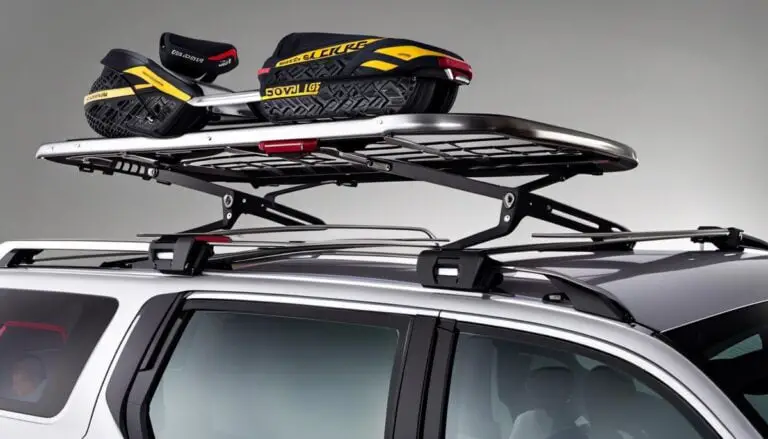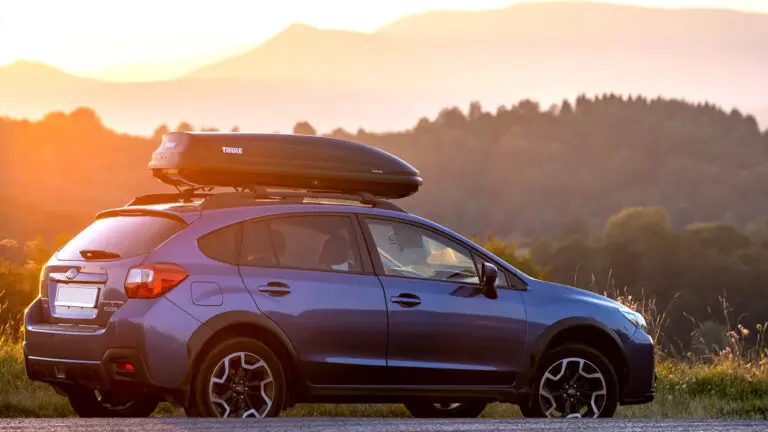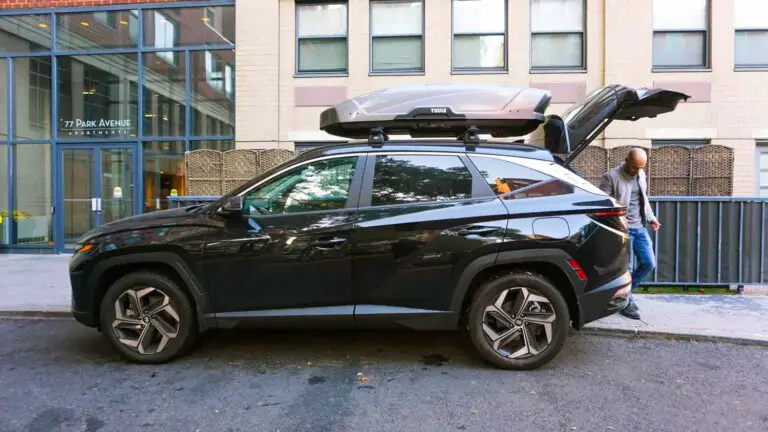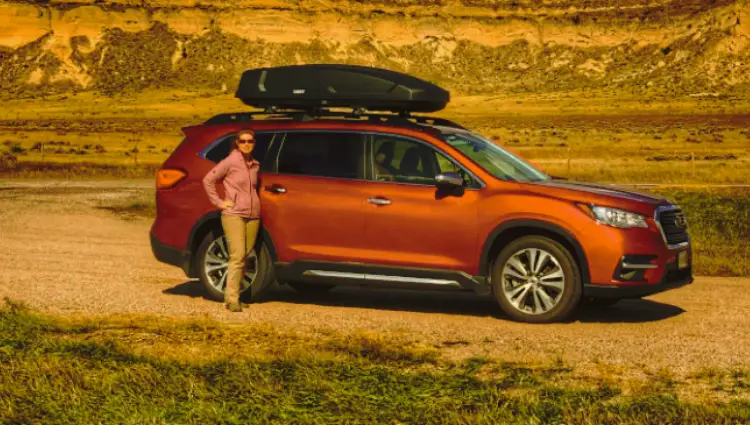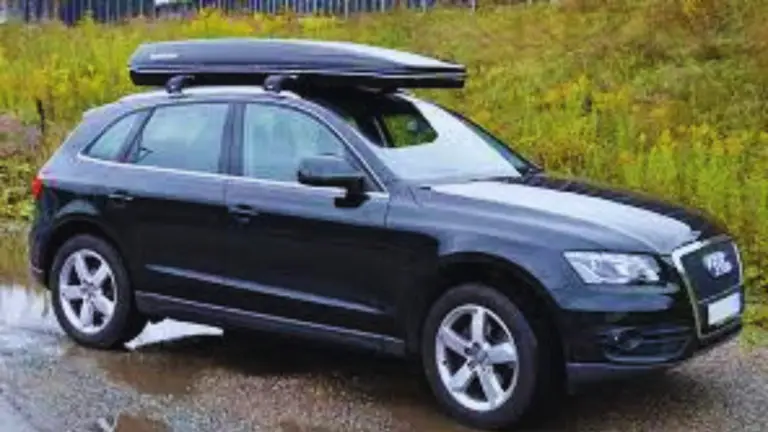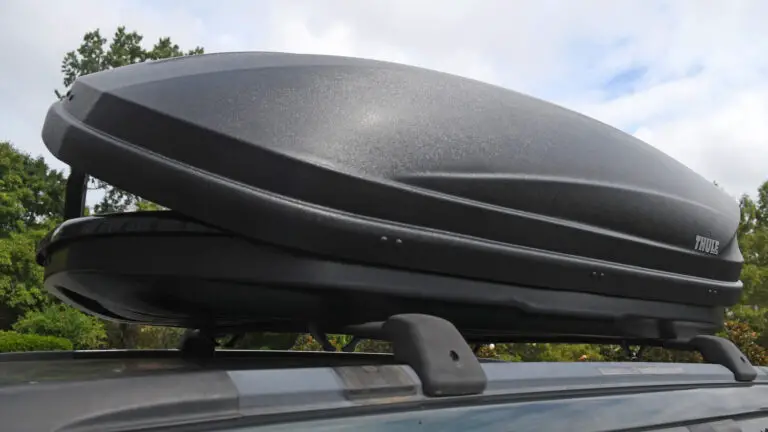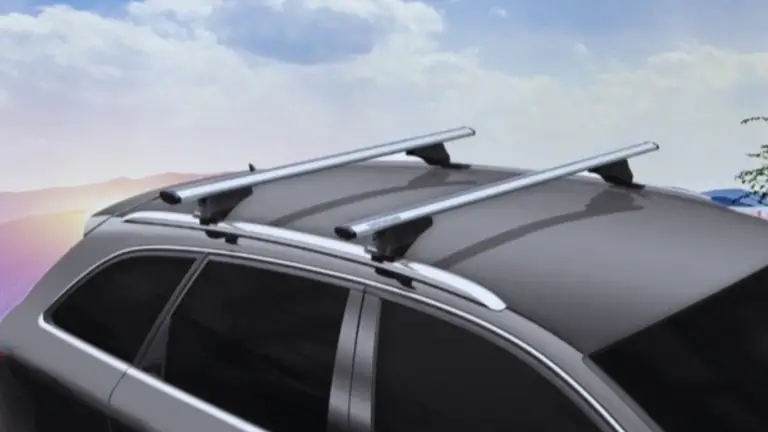Whether you’re a seasoned surfer or just starting out, understanding how to properly secure your surfboard to your vehicle’s roof rack is vital for both the protection of your gear and the safety of your journey. How to Securely Tie a Surfboard to a Roof Rack: A Step-by-Step Guide for Safe and Hassle-Free Transport After cementing our understanding of roof racks, we’ll then venture into the realm of surfboard tying techniques, examining various methods that will help you safely transport your board using specially designed straps or cords. Whatever your level of experience or type of roof rack, this guide will provide you with detailed, easy-to-follow steps for transporting your surfboard securely and efficiently.
Understanding Roof Racks
Understanding Different Types of Roof Racks
There are a variety of roof racks to meet diverse needs. Some notable types include the bare roof rack, which includes a few crossbars without a specific mount; the raised rail, which consists of crossbars mounted on two rails that run parallel along the sides of the vehicle’s roof; the rain gutter, an old-school-type rack that utilizes the rain gutters already present on the vehicle’s roof; and the fixed point rack, which is bolted to several predefined points on the roof. Understanding your vehicle’s roof rack is essential, as it determines the method of securing your surfboard.
Identifying your Roof Rack
Identifying the type of roof rack you have is straightforward. Look for the presence or absence of side rails and crossbars. Bare roof racks usually have crossbars attached with a strong clamp, whereas raised rails involve crossbars mounted on two rails running along the vehicle’s edges. Similarly, rain gutter types have the roof crossbars connected directly to the vehicle’s rain gutters, and fixed point racks can be identified by locating the bolts or specific mounting points on the roof.
Function and Utilization of Roof Racks
Roof racks primarily function as a versatile carrier system, allowing the safe transportation of cumbersome items like surfboards. Though designs vary, most roof racks consist of two parts: the mount, which attaches securely to your vehicle, and the actual rack, where your items are placed and stored. To secure a surfboard, the board is placed on the rack, and sturdy straps or rope are used to snugly fasten the board to the rack, providing a reliable and secure way to transport your surfboard.
The utilization of roof racks requires being mindful of the load limit, proper item placement, and secure fastening. When tying a surfboard to a roof rack, it’s best to have the board’s fins facing up and towards the rear of the vehicle. This helps reduce wind resistance and keeps the board stable during transport. Secure the surfboard in its front and rear areas. Straps or ropes should be tight enough to hold the board firmly in place, yet not so tight that they cause damage.
Remember, securing a surfboard to a roof rack isn’t simply a question of tying it down. The safety of your board, your vehicle, and others on the road hinges on the proper usage of your roof rack. Hence, always double-check your work before driving off.
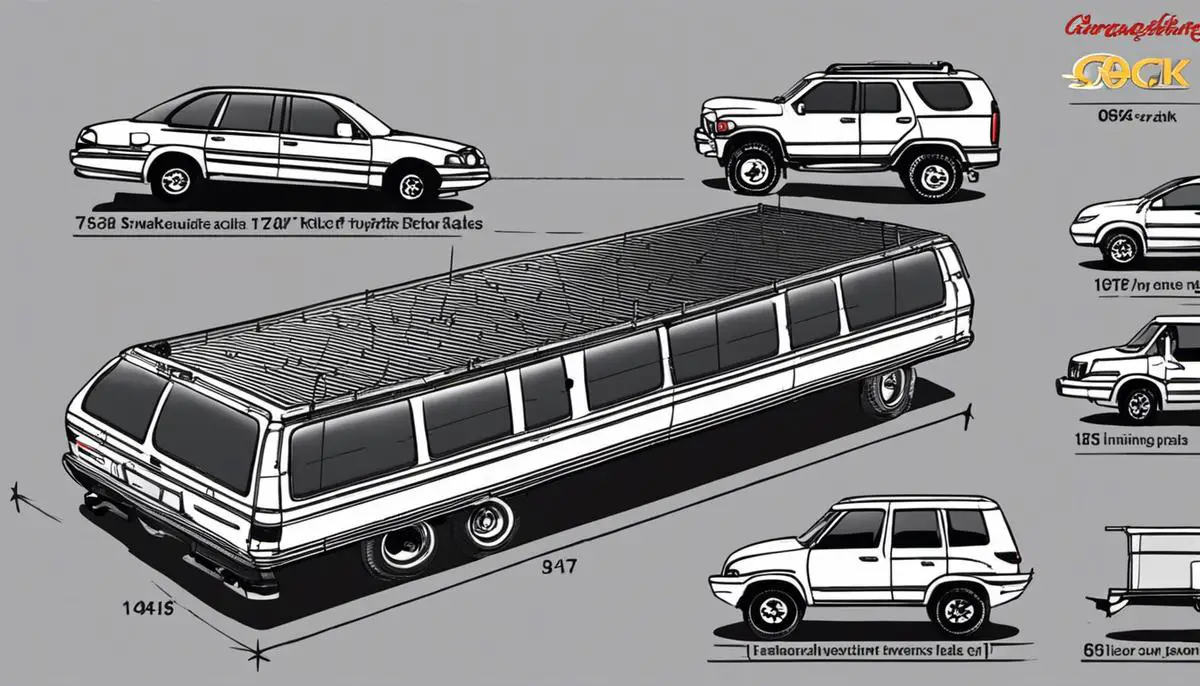
Surfboard Tying Techniques
Choose the Right Equipment
To begin, ensure you have the correct equipment. This includes a suitable roof rack that fits your vehicle and accommodates the size of your surfboard, as well as sturdy straps or cords designed for tying a surfboard. Surfboard-specific straps with buckles are the best option because they offer a firm grip and reduce the risk of slippage during transportation.
Prepare Your Surfboard
Sand and saltwater can damage your vehicle’s paintwork, so always rinse off your surfboard before mounting it onto the roof rack. It’s also a good idea to place a soft rack pad or some type of protection over your car’s roof rack. Ensure the fins are removed or facing upwards and towards the front of the vehicle before loading the surfboard on the roof rack.
Placement of the Surfboard
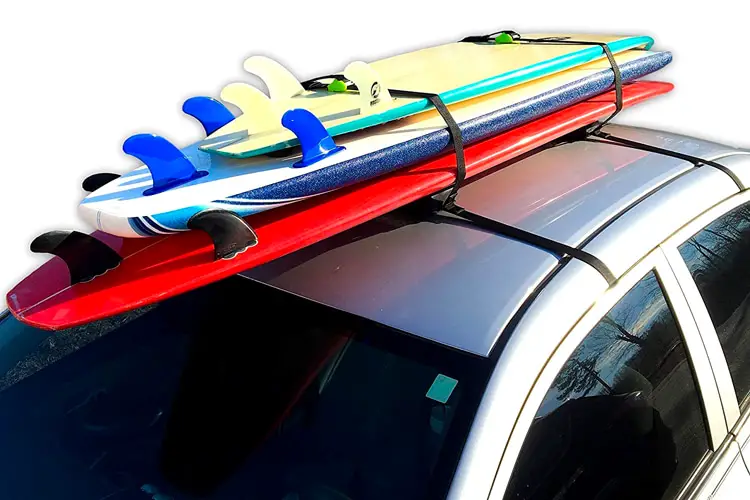
Carefully place your surfboard on the roof rack. The surfboard should lie flat on its deck (the surface where you normally stand), not on its edge. This arrangement lowers the wind resistance and keeps the surfboard stable. If your vehicle has crossbars, position the surfboard so that these bars support it evenly.
Securing With Straps or Cords
If you are using a pair of surfboard-specific straps, loop one end of each strap around one of the crossbars or side rails, then bring the straps over the surfboard. Solidly fasten the straps on the other side, making sure the tension is even across the board’s length. If your surfboard has a leash plug, you can also run a cord through it for added security.
Test the Security
Perform a final check by trying to wiggle the surfboard with your hands. If it moves or shakes, tighten the straps until it’s steady. Do not overtighten, as this may cause damage to the surfboard.
Stacking Multiple Surfboards
If you need to transport more than one surfboard, invert the additional board(s) and stack them on the first board. Simply repeat the tying process with heavy-duty straps, ensuring all the boards are secure.
Drive Carefully
After tying a surfboard to a roof rack, it’s advisable to adjust your driving style. Avoid sudden accelerations and abrupt stops. The added height and weight may affect the stability and handling of your vehicle. Check the surfboard periodically during your journey, especially if you’re traveling long distances.
Arrival and Unmounting
Upon reaching your destination, carefully unfasten the straps holding the surfboard. Lift the board off carefully from the sides to prevent it from sliding and causing possible damage to it or your vehicle. Rinse your surfboard again before stepping into the waves, then get ready to catch some serious surf!
Learning the correct method to tie a surfboard to a roof rack will ensure your priceless gear is securely fastened for transport. This will prevent potential accidents and avoid any unnecessary damage to your beloved surfboard or vehicle. Remember, safety first!
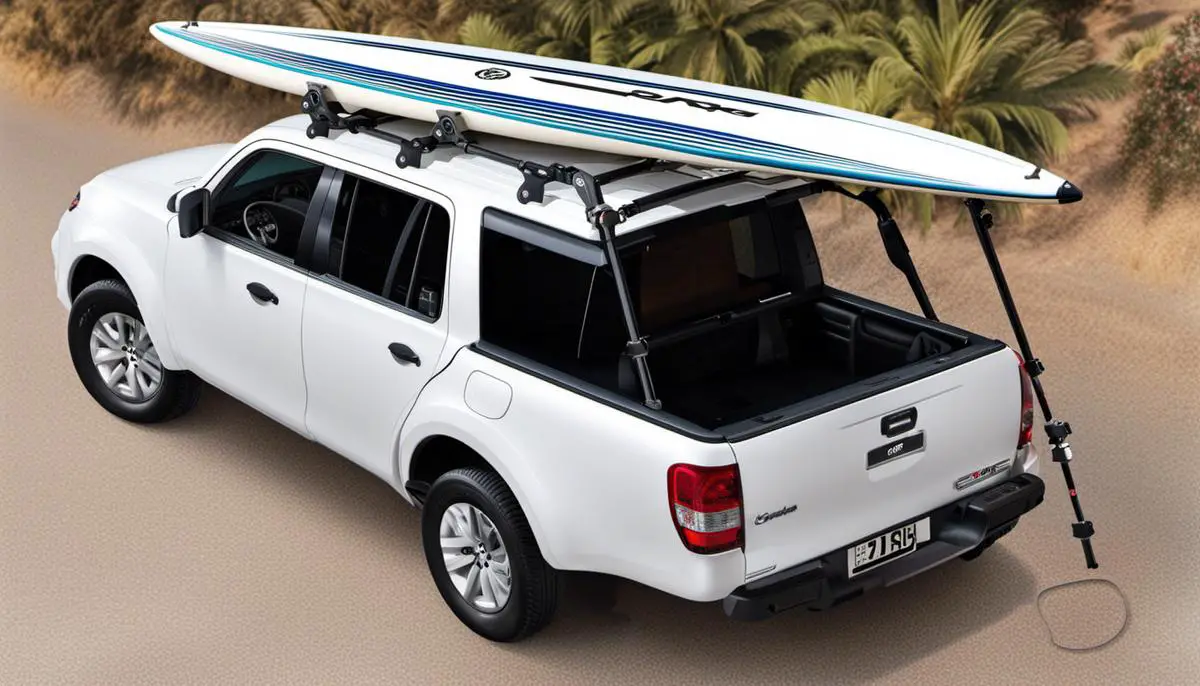
Learning how to properly tie a surfboard to your vehicle’s roof rack is not just an essential skill for any surfer, but it is also a key factor in ensuring safe and convenient transportation of your gear. With the numerous roof racks and tying techniques at your disposal, finding the best method that suits your needs might seem overwhelming at first. However, when armed with the comprehensive knowledge provided in this guide, the process undoubtedly becomes much simpler and hassle-free. So, the next time you’re gearing up for a day at the beach or a surf trip, you’ll be confident that your surfboard is securely fastened and ready for the journey ahead. Remember, determining the optimal solution is not about complicating the process but rather about understanding the tools at your disposal and knowing how to use them effectively.How To Securely Tie a Surfboard to A Roof Rack: FAQs
How To Securely Tie a Surfboard to A Roof Rack: FAQs
What kind of roof rack do I need?
You’ll want a roof rack designed specifically for carrying surfboards. Look for wide, padded crossbars that will safely cradle the board. Rhino-Rack and Yakima make good options.
How do I protect the board during transport?
Use a board bag or wrap the board in soft towels or blankets before placing it on the roof rack. This will prevent the racks from damaging the board. Avoid using bungee cords directly on the board.
What’s the best way to tie it down?
Use heavy-duty straps designed for securing surfboards, not regular bungee cords. Run two straps over the board, one at each end. Make sure the straps are tight and crossed under the rack bars for added stability.
Should the fins be up or down?
Turn the board fins down to reduce wind resistance. Padding under the fins will prevent damage to the roof. Make sure the strap goes around the fins so they don’t rip through.
How can I prevent the straps from loosening?
Tie off the excess strap and use the cinch system to really tighten them down. Check the straps at stops during your drive to ensure they’re still tight.
What if I have multiple boards?
Use board separators placed perpendicular to the boards before strapping them down. This spreads the pressure and prevents the boards from banging together.
How do I safely drive with a surfboard on top?
Take turns slower, and watch for low overhead clearances. Avoid any aggressive driving or braking that could shift the load. Make sure to check local regulations on roof loads.
Should I still use a leash?
Yes, attaching a leash to the board and also to the roof rack provides an extra level of security in case the straps loosen unexpectedly.
How can I reduce drag and fuel consumption?
A removable roof rack is better for fuel efficiency when not in use. An aerodynamic board bag also helps minimize drag.
